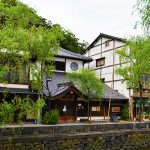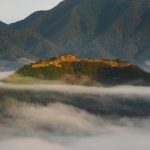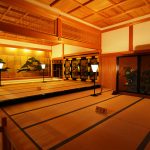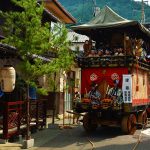Amanohashidate
Amanohashidate, Miyajima in Hiroshima Matsushima in Miyagi are called the three views of Japan. Besides the three views of Japan, there are lots of notable spots such as a national park of Japan, the special place of scenic beauty, cultural Landscape and [Michelin Green Guide] 2 stars traveling spot.
If you would like to see the magnificent scenery of Amanohashidate, 2 of observatories at “Kasamatsu Park” in North and “Amanohashidate View Land” in South are the best 2 options.
If time allows, stroll around Amanohashidate in the pine trees street. admire each kind of pine trees. Different kinds of pine trees are very interesting.
Transportation: When departing from Kyoto/Osaka to Amanohashidate, the most 2 popular ways are to take a train (JR+Kyoto Tango Railway) or a highway bus of Kyoto Tango Kairiku Kotsu.
The limited express will take you to Amanohashidate Station in around 2 hours. However, changing trains at Fukuchiyama are required when taking some of limited expresses.
Right now, you can purchase Kansai Wide Pass (JR-WEST RAIL PASS or the pass covers the Northern Kansai). Available for very broad area such as Tottori, Kyoto Tango Railway (e.g.: Amanohashidate).
Complete route:
Amanohashidate station > Amanohashidate View Land > Chion-ji > Monument of the three views of Japan > ferry pier > Motoise Kono Shrine > Kasamatsu Park > ferry pier > Amanohashidate station
Amanohashidate View Land
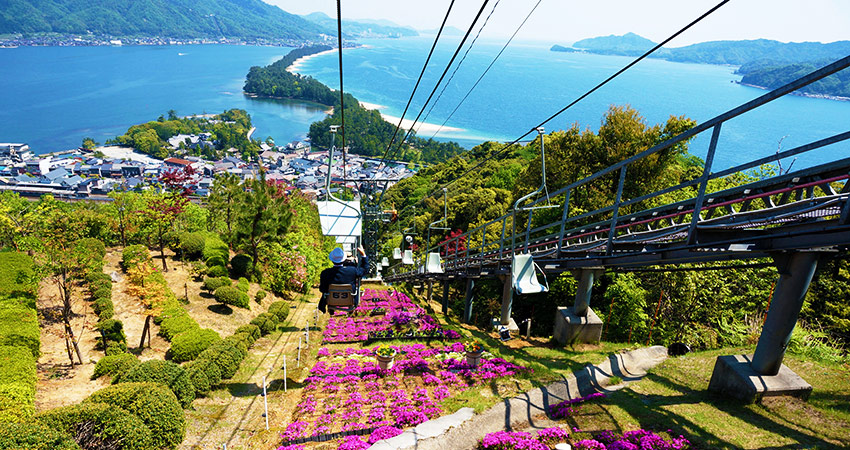
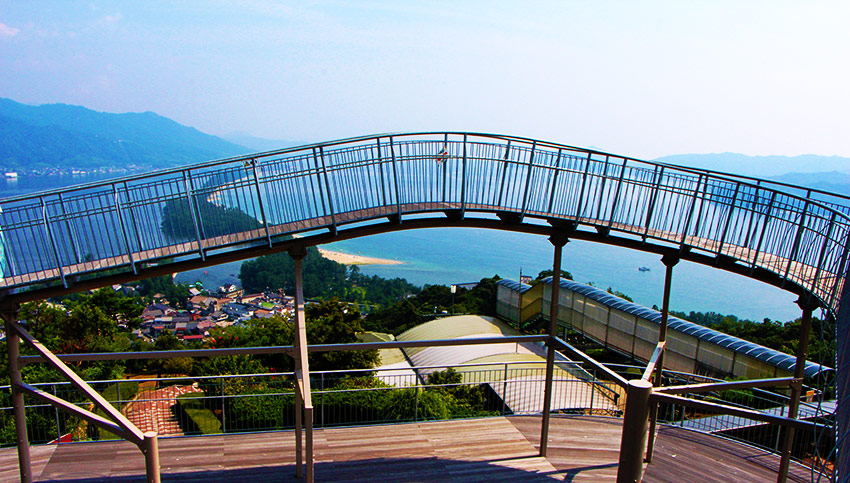
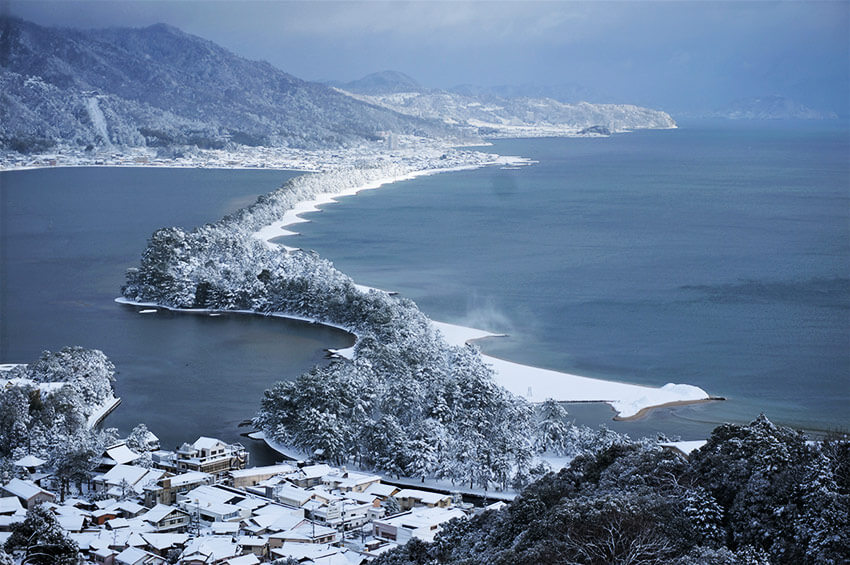
This is an observatory located on the southern side of Amanohashidate. From Amanohashidate View Land’s Rear View Observatory (“Mata no zoki-dai”), Amanohashidate will appear like a dragon flying in the sky. The observatory is thus aptly named as the “Flying Dragon Observatory” (“Hiryu-kan”). If you take the aerial lift or cable car to go up or down the mountain, the return trip between the observatory and Amanohashidate station takes only about 40 minutes to an hour. This is a perfect option for tourists who do not plan to stay long at Amanohashidate but still wish to take in the breathtaking views.
Please note: do not swing your legs or body when seated on the aerial lift
Opening hours: seasonal
Getting there: By Kyoto Tango Railway, get off at Amanohashidate. By high speed bus, get off at Amanohashidate and walk for 5 minutes.
Chion-ji
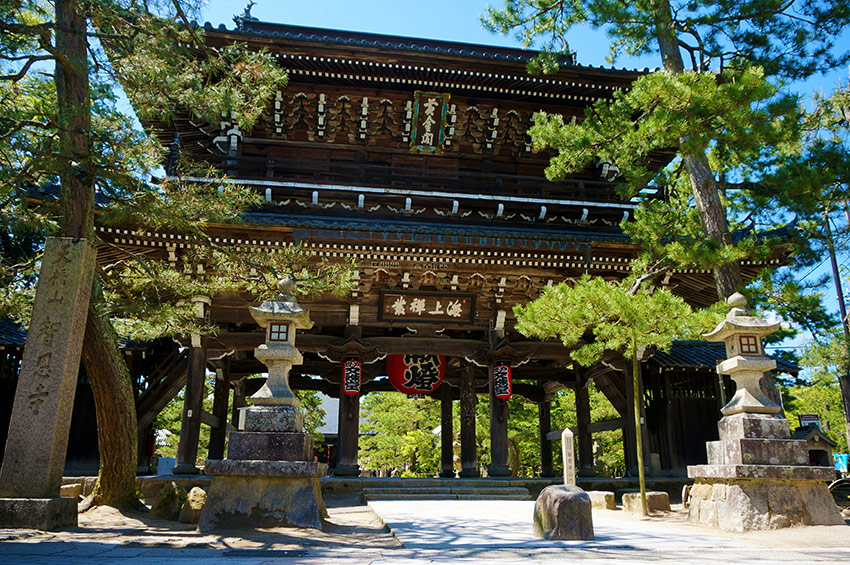
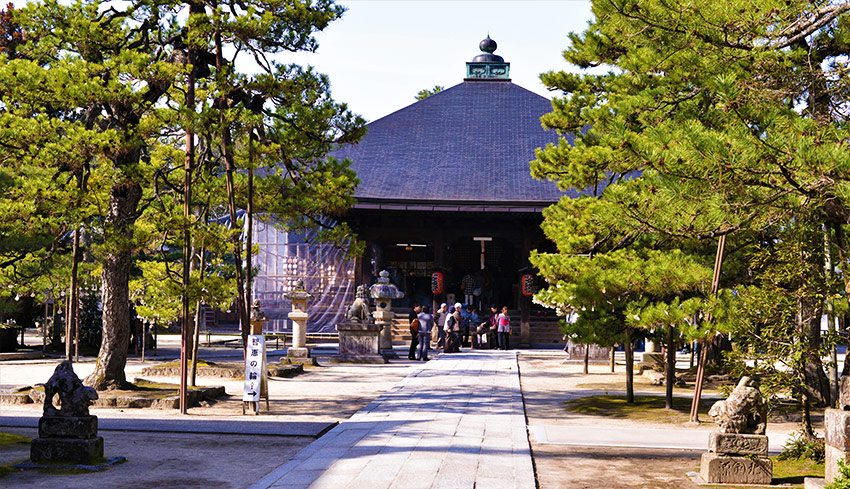
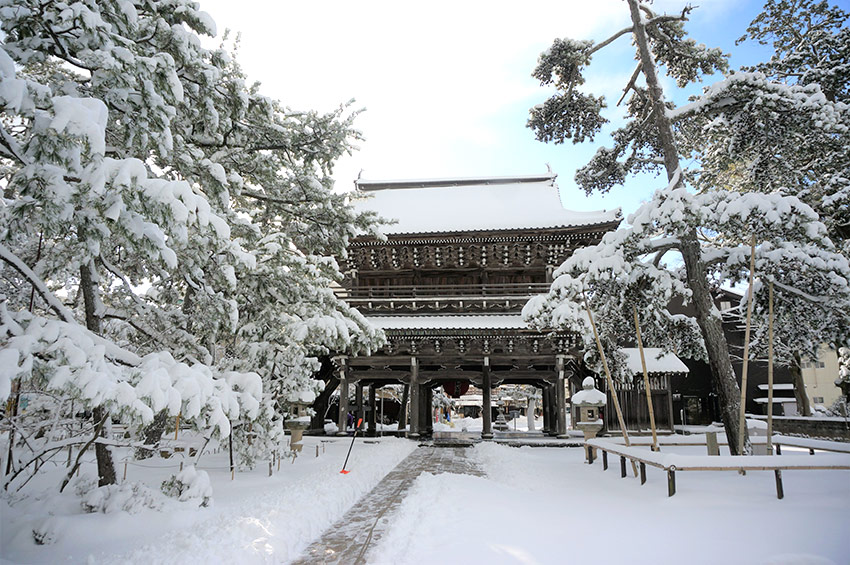
Located near the Amanohashidate train station, Chion-ji is one of the three sacred Monju temples in Japan. The Monju Bodhisattva, who governs wisdom, is being worshipped here. The Monju Bodhisattva enshrined at the Chion-ji is normally hidden from the public eye. Only on three days of the year (between 1st to 3rd of January, January 10th and July 24th) will the temple open the area to the public. On these days, you will see throngs of believers arriving at the temple to pay their respect to the Bodhisattva. Chion-ji is thus an important center of religious faith in the Amanohashidate area. Students about to enter into examinations, as well as their parents, often take the time to pay a special trip to the temple in hopes of achieving satisfactory results.
Getting there: By Kyoto Tango Railway, get off at Amanohashidate. By high speed bus, get off at Amanohashidate and walk for 5 minutes.
Kaisenkyo (Rotating) Bridge
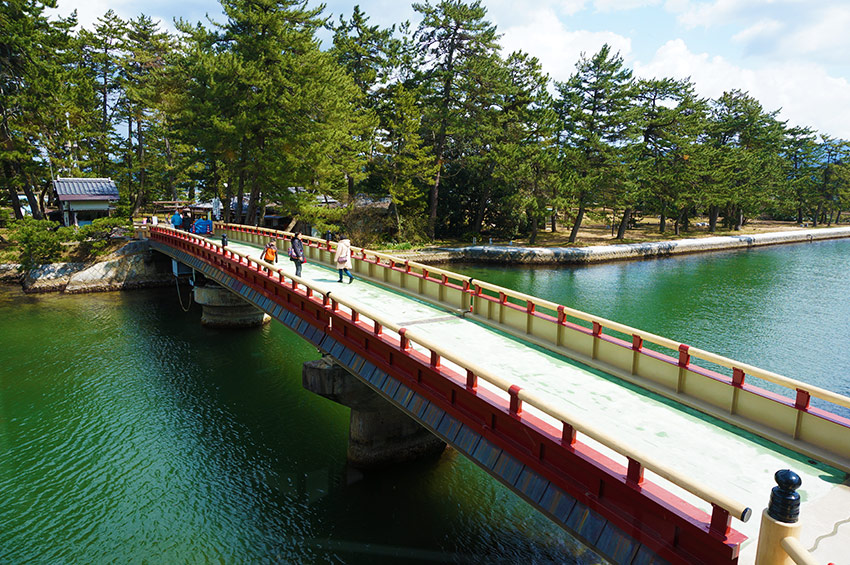
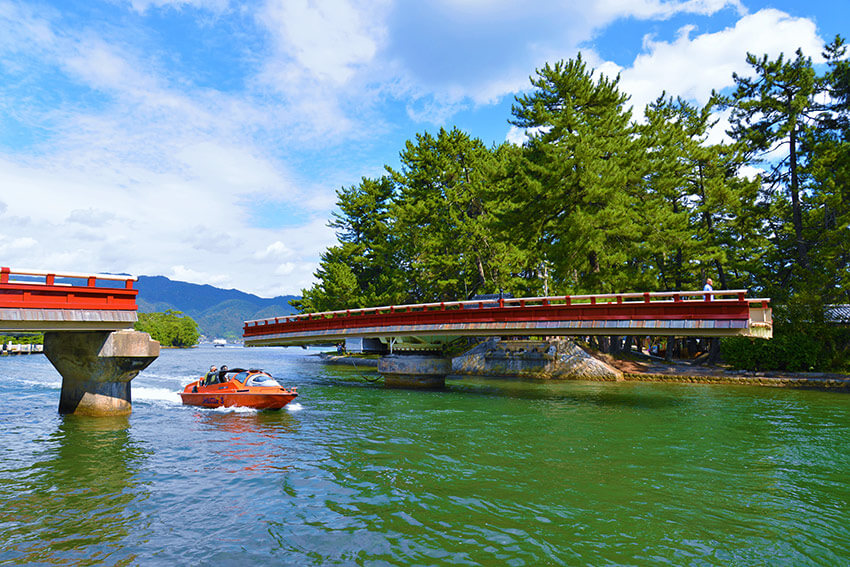
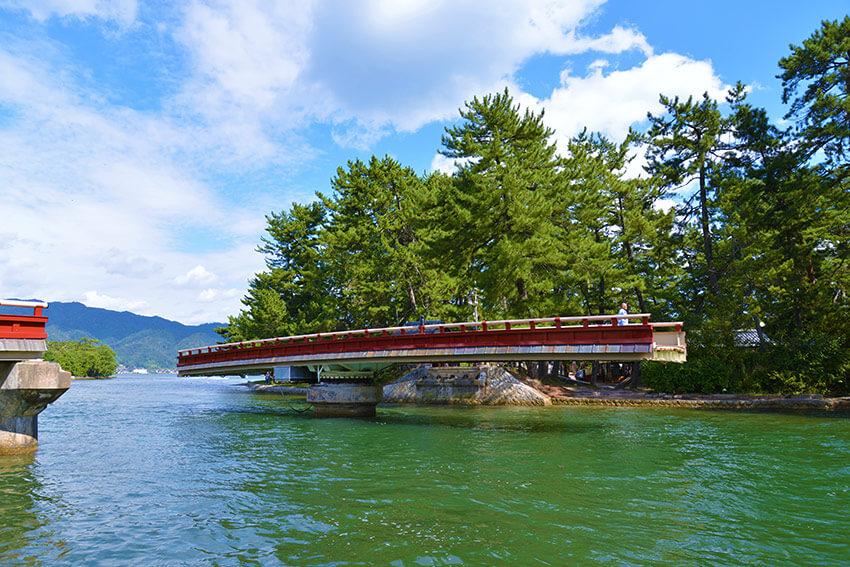
Located next to Chion-ji, Kaisenkyo Bridge connects the bridges in front of Amanohashidate and Chion-ji. When large-sized ships need to pass, the bridge will rotate at a 90° angle, allowing the vessel to go through. If you are lucky enough, you may be able to see the bridge in action! Between 11 am to 3 pm on Sundays, the bridge will rotate once on the hour. Visitors will be able to see this famed action during this time period.
Motoise Kono Shrine
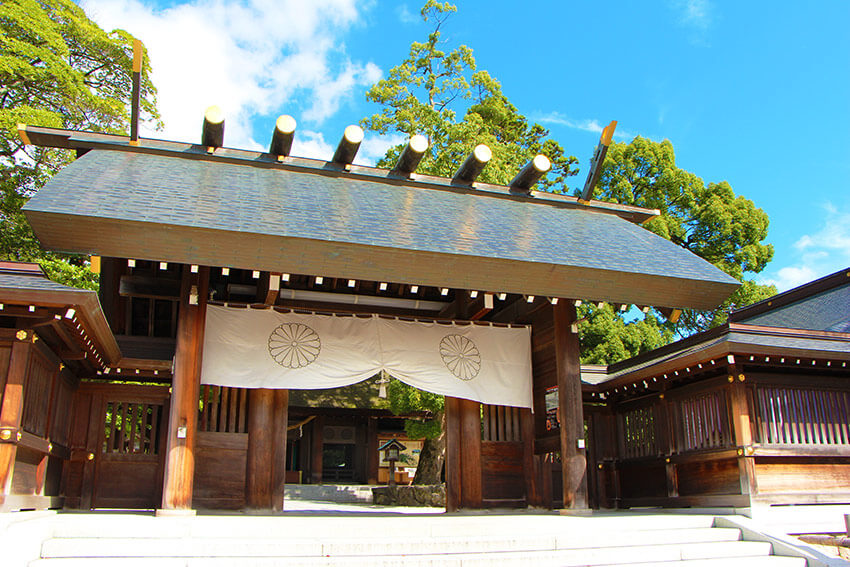
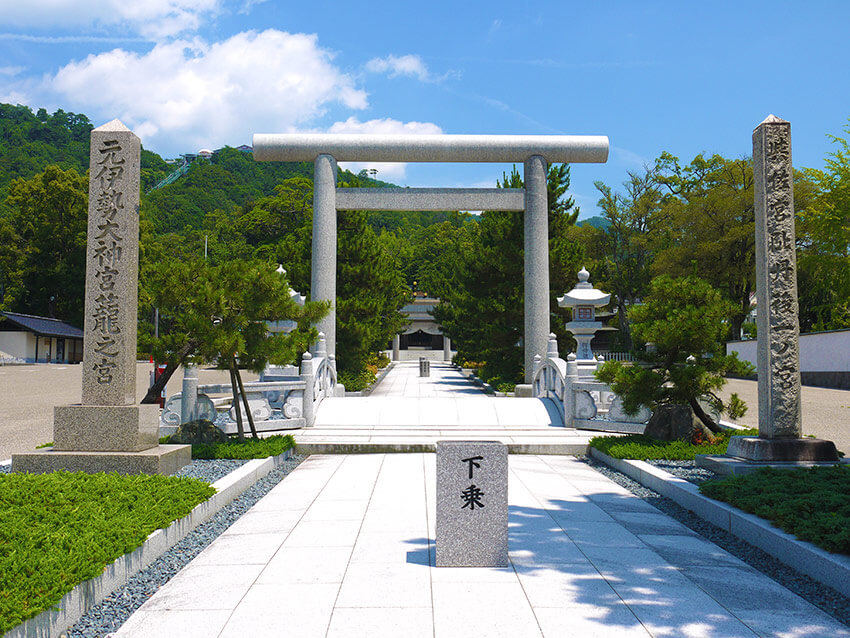
Motoise Kono Shrine is the shrine with the highest shinto classification in the Tango Peninsula. It is mainly set to worship the deity Ame no hoakari no Mikoto, the holy grandchild. Ise Grand Shrine located in the Mie Prefecture originated from Kono Shrine. Like Ise Grand Shrine, this shrine is built with Shinmei-zukuri, an architectural style used only for the holiest of shinto shrines. Inside Kono Shrine, its handlebars are decorated with coaster stones in the colors of green, yellow, red, white and black, which represent the five elements. The same coaster stones in five colors can only be seen at Ise Grand Shrine and Kono Shrine.
Kono Shrine has two official seals, one bearing the words “Motoise Shrine”, the other “Kono Shrine”. Visitors who collect official seals should bring along their seal books for stamping.
Open hour: 8 am to 5 pm
Getting there: Tango Transportation: by bus, get off at Motoise Kono Shrine and walk 5 minutes. By Tourist Boat, get off at Ichinomiya and walk 5 minutes.
Kasamatsu Park
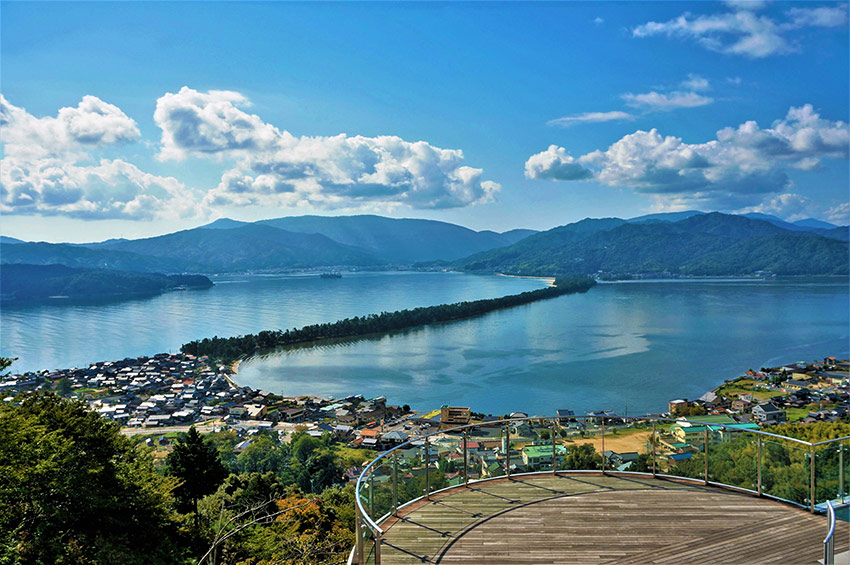
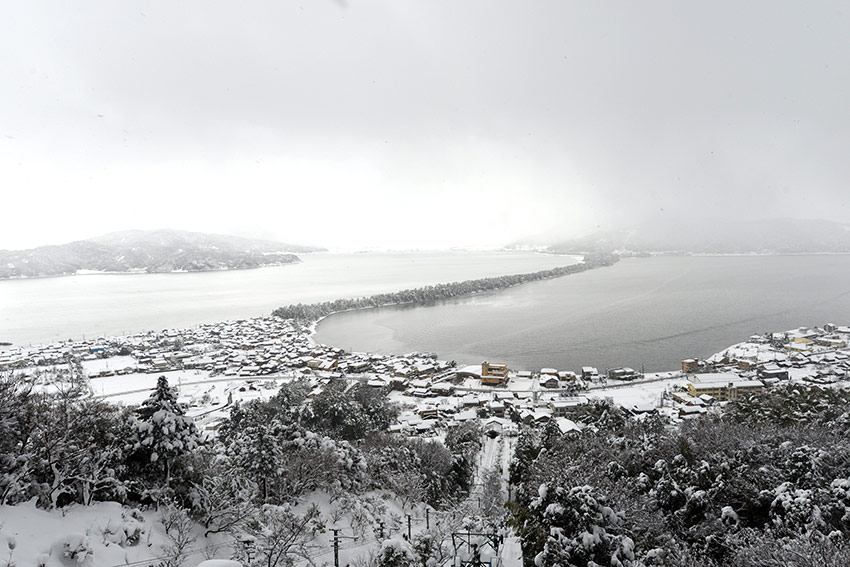
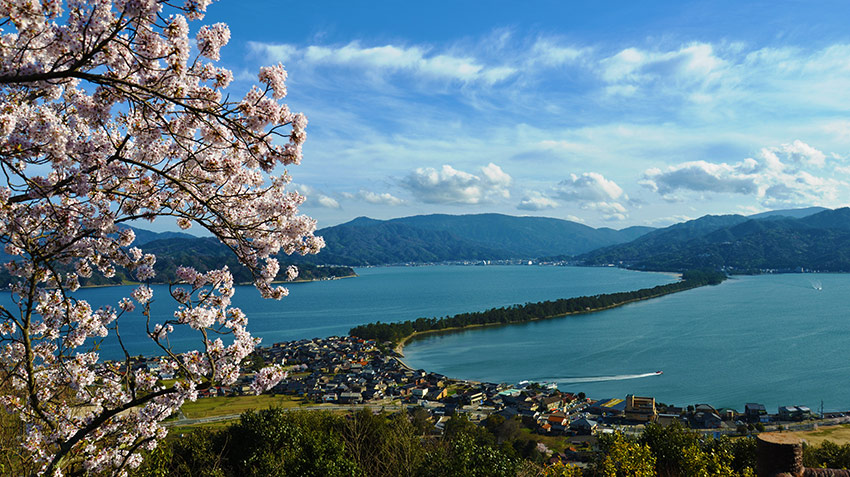
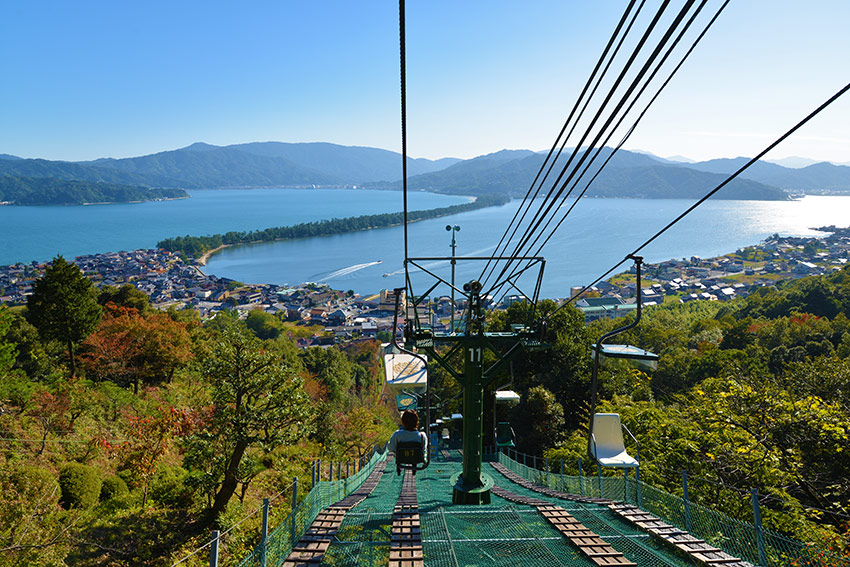
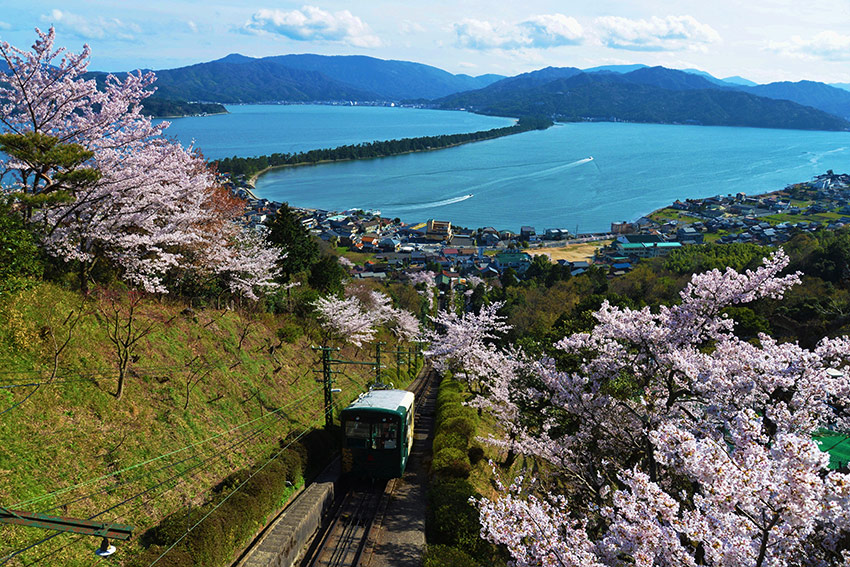
An observatory located to the north of Amanohashidate, Kasamatsu Park has an altitude of approximately 130 meters. It is a famed viewing spot to look out on Amanohashidate since ancient times. Like Amanohashidate View Land, Kasamatsu Park has its own Rear View Observatory; it is actually the first place to offer a rear view observatory and is renowned since antiquity. From this location, Amanohashidate soars across the sky like a spectacular aerial bridge. On both sides of the cable car route, some 100 cherry trees can be found. During the spring time, enjoy a romantic ride atop the cable car with a glorious view of the cherry blossom en route.
Please note: do not swing your legs or body when seated on the aerial lift.
Address: Ogaki, Miyazu City, Kyoto Prefecture.
Getting there: Tango Transportation: by bus, get off at Motoise Kono Shrine and walk 5 minutes. By Tourist Boat, get off at Ichinomiya and walk 10 minutes.
Nariai-ji Temple
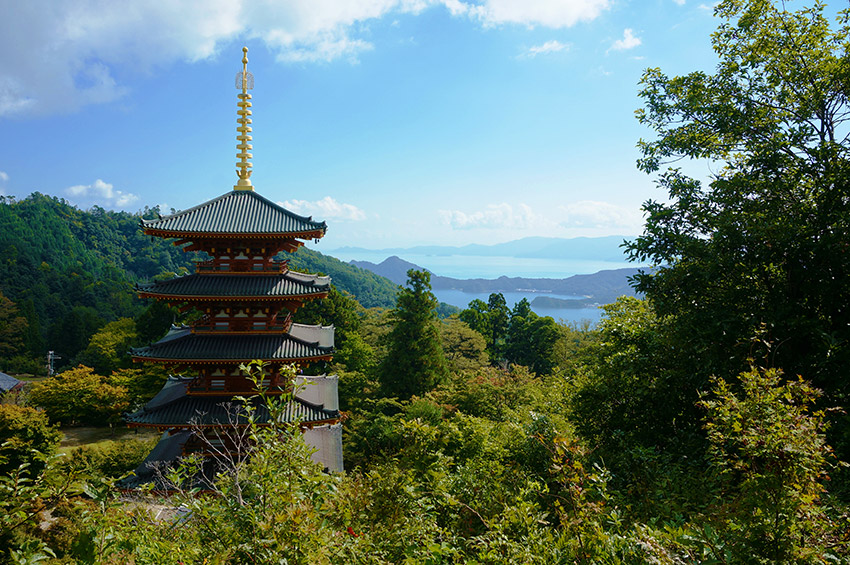
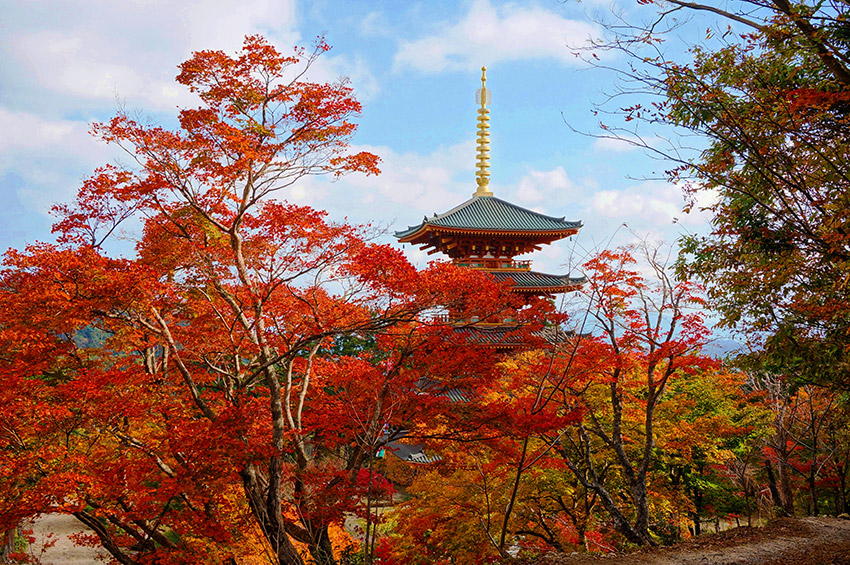
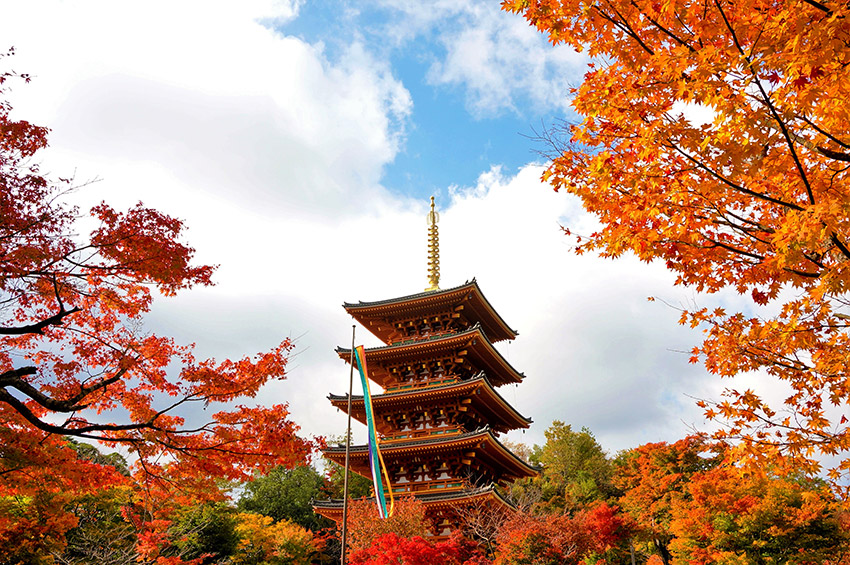
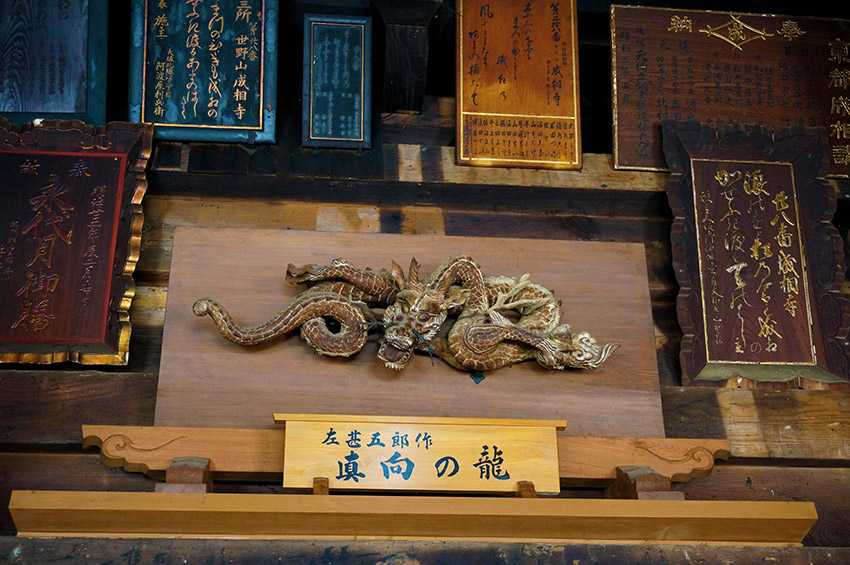
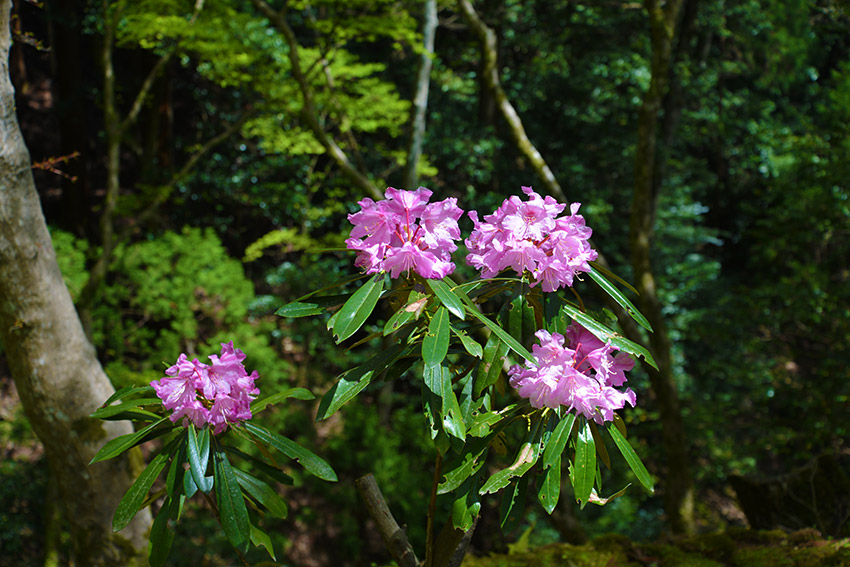
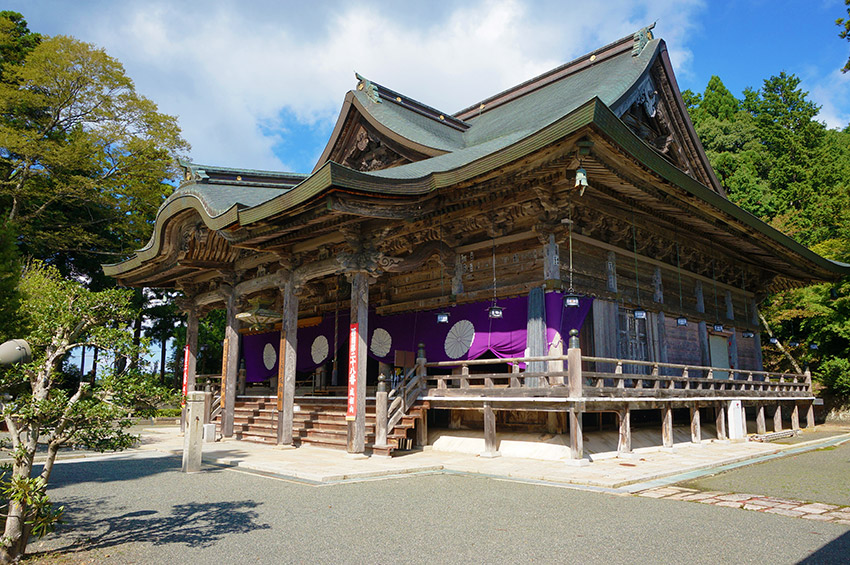
Located at about 2 km away from Kasamatsu Park, Nariai-ji was constructed in the year 704. It is renowned as the 28th temple on the Saigoku Kannon Pilgrimage, a pilgrimage consisting of thirty-three Buddhist temples. Famous legends such as the Unstruck Bell, the Bottomless Pond and One Word, One Wish can be found here. A dragon carving, which always appears to be forward-facing whether seen from the left or the right (the Mamuki no Ryu), as well as the Iron Bathing Bucket, an important Japanese cultural relic, can also be seen here. The five-storied pagoda depicted in “Amanohoshidate”, a scroll painted by Sesshu Toyo, can be found here and has recently completed its reconstruction and repair works. Nariai-ji Temple is also a popular spot to see calluna blossoms and fall colors. Every year, some 3000 trees of calluna bloom in the early parts of May. In the middle of November, the pagoda is surrounded by trees whose leaves change colors. This is also one of the photographic hotspots in the Kitakinki region.
Opening hours: 8 am to 4:30 pm
Getting there: take the tourist bus to the peak from Kasamatsu Park; the ride takes about 7 minutes.


